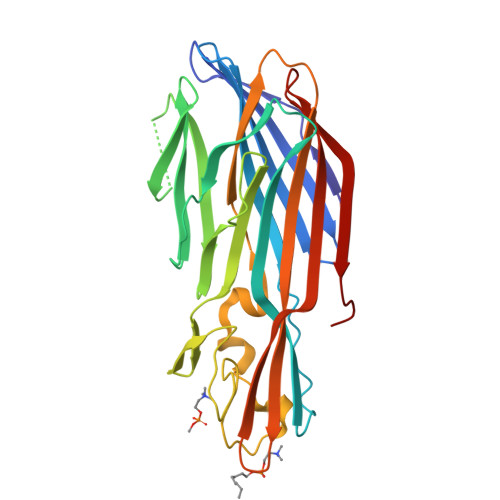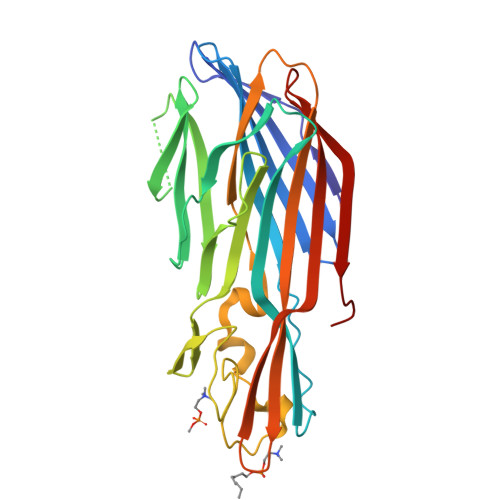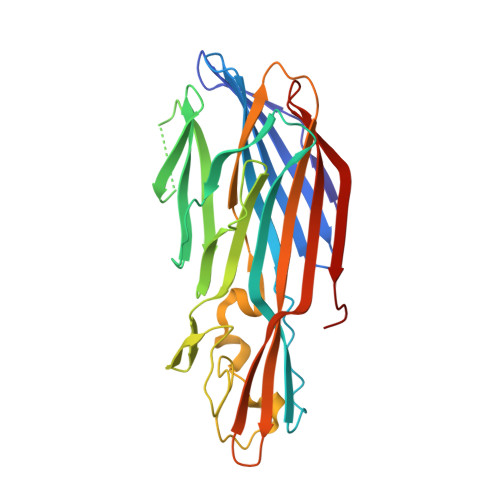Structure-based discovery of a small-molecule inhibitor of methicillin-resistantStaphylococcus aureusvirulence.
Liu, J., Kozhaya, L., Torres, V.J., Unutmaz, D., Lu, M.(2020) J Biological Chem 295: 5944-5959
- PubMed: 32179646
- DOI: https://doi.org/10.1074/jbc.RA120.012697
- Primary Citation of Related Structures:
6U2S, 6U33, 6U3F, 6U3T, 6U3Y, 6U49, 6U4P - PubMed Abstract:
The rapid emergence and dissemination of methicillin-resistant Staphylococcus aureus (MRSA) strains poses a major threat to public health. MRSA possesses an arsenal of secreted host-damaging virulence factors that mediate pathogenicity and blunt immune defenses. Panton-Valentine leukocidin (PVL) and α-toxin are exotoxins that create lytic pores in the host cell membrane. They are recognized as being important for the development of invasive MRSA infections and are thus potential targets for antivirulence therapies. Here, we report the high-resolution X-ray crystal structures of both PVL and α-toxin in their soluble, monomeric, and oligomeric membrane-inserted pore states in complex with n -tetradecylphosphocholine (C 14 PC). The structures revealed two evolutionarily conserved phosphatidylcholine-binding mechanisms and their roles in modulating host cell attachment, oligomer assembly, and membrane perforation. Moreover, we demonstrate that the soluble C 14 PC compound protects primary human immune cells in vitro against cytolysis by PVL and α-toxin and hence may serve as the basis for the development of an antivirulence agent for managing MRSA infections.
Organizational Affiliation:
Public Health Research Institute, Department of Microbiology, Biochemistry, and Molecular Genetics, New Jersey Medical School, Rutgers University, Newark, New Jersey 07103.

















